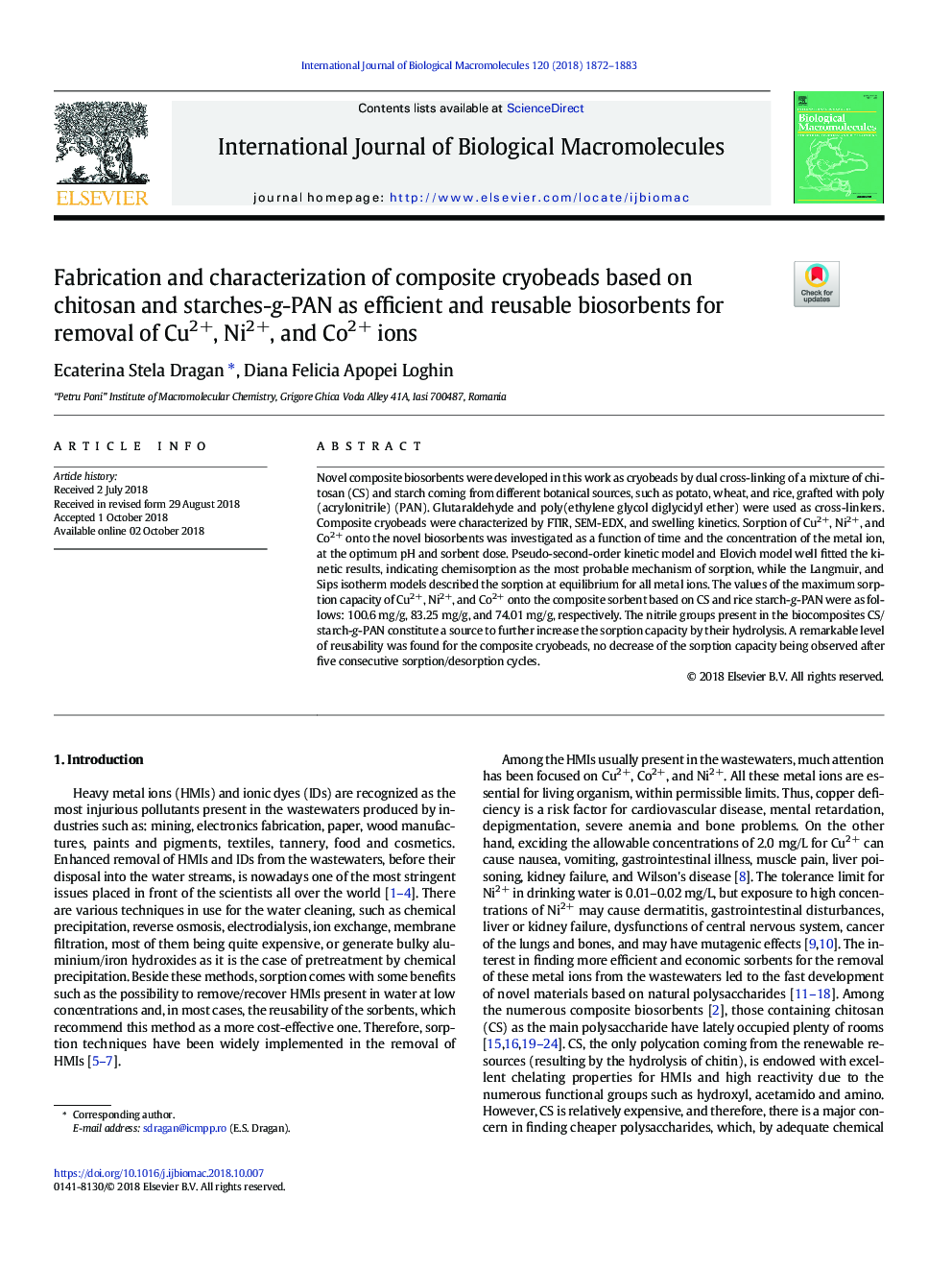| Article ID | Journal | Published Year | Pages | File Type |
|---|---|---|---|---|
| 11026108 | International Journal of Biological Macromolecules | 2018 | 12 Pages |
Abstract
Novel composite biosorbents were developed in this work as cryobeads by dual cross-linking of a mixture of chitosan (CS) and starch coming from different botanical sources, such as potato, wheat, and rice, grafted with poly(acrylonitrile) (PAN). Glutaraldehyde and poly(ethylene glycol diglycidyl ether) were used as cross-linkers. Composite cryobeads were characterized by FTIR, SEM-EDX, and swelling kinetics. Sorption of Cu2+, Ni2+, and Co2+ onto the novel biosorbents was investigated as a function of time and the concentration of the metal ion, at the optimum pH and sorbent dose. Pseudo-second-order kinetic model and Elovich model well fitted the kinetic results, indicating chemisorption as the most probable mechanism of sorption, while the Langmuir, and Sips isotherm models described the sorption at equilibrium for all metal ions. The values of the maximum sorption capacity of Cu2+, Ni2+, and Co2+ onto the composite sorbent based on CS and rice starch-g-PAN were as follows: 100.6â¯mg/g, 83.25â¯mg/g, and 74.01â¯mg/g, respectively. The nitrile groups present in the biocomposites CS/starch-g-PAN constitute a source to further increase the sorption capacity by their hydrolysis. A remarkable level of reusability was found for the composite cryobeads, no decrease of the sorption capacity being observed after five consecutive sorption/desorption cycles.
Related Topics
Life Sciences
Biochemistry, Genetics and Molecular Biology
Biochemistry
Authors
Ecaterina Stela Dragan, Diana Felicia Apopei Loghin,
